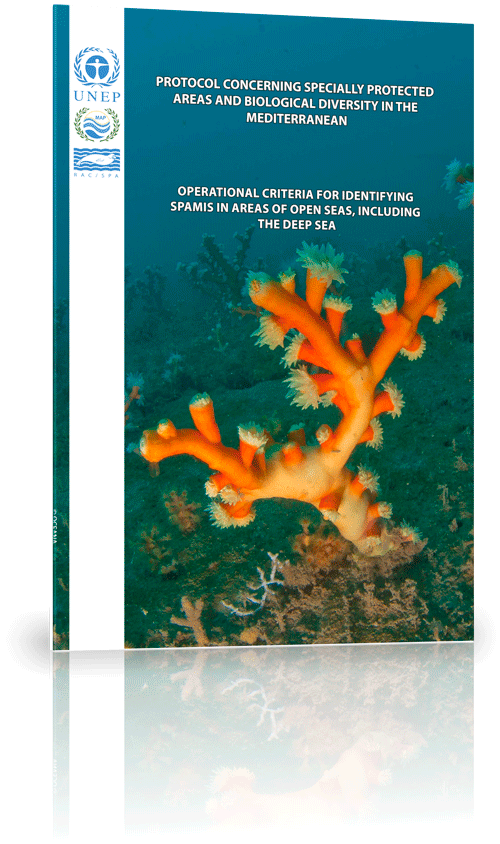Search
Operational criteria for identifying SPAMIS in areas of open seas
The common criteria for selecting Protected Marine and Coastal Areas that could be put on the SPAMI List appear in Annex 1 to the SPA/BD Protocol. These criteria were adopted by the Meeting of Plenipotentiaries held in Monaco on 24 November 1996 (UNEP(DEPI)/MED WG.348/Inf.3).
In terms of operational prospects, RAC/SPA enriched the criteria to adapt them to the open seas, including the deep sea, taking into account other pertinent ecological criteria such as:
- those adopted in 2008 by the Convention on Biological Diversity (CBD) to identify Ecologically or Biologically Significant Areas (EBSA) that should be protected in open sea waters and the habitats of the ocean depths (UNEP(DEPI)/MED WG.348/Inf.5 and UNEP(DEPI)/MED WG.348/Inf.6)
- a set of criteria to identify habitats of importance for Mediterranean fishing, taking into account the ongoing promotion within the framework of the General Fisheries Commission for the Mediterranean (GFCM) for establishing regulated-access fishing areas, including in the high sea.
These operational criteria, as validated by the Open Seas Project's Steering Committee and the SPA Focal Points are classed in four main categories:
- General criteria: According to the SPA/BD Protocol, to be eligible for inclusion on the SPAMI List, an area must meet at least one of the general criteria listed in Article 8 Paragraph 2 of the SPA/BD Protocol;
- Criteria concerning the area's regional value: According to the SPA/BD Protocol, regional value is a basic condition for an area's being put on the SPAMI List. The criteria for this category must therefore permit in-depth assessment of the ecological features of the area that is a candidate to be a SPAMI;
- Criteria concerning scientific, educational or aesthetic interest: The SPA/BD Protocol sets out criteria that take into consideration the main aspects related to the site's knowledge and landscape value;
- Other features and factors that are seen as favourable: These include criteria that concern the reduction/neutralisation of threats and the opportunities for ecosystem management of the Protected Areas, including the possibility of the public's and local communities' participation in managing the area. These criteria are subdivided into:
- Sustainable use criteria: The criteria listed in this category aim at assessing (i) the threats engendered by human activities to the marine environment and the use of the marine environment and the living resources of the area, and (ii) the importance of the area for human well-being, including the sustainable use of living marine resources and the other services provided by the ecosystems
- Feasibility criteria: These criteria aim at assessing the constraints that could occur in the process of preparing the proposal of a SPAMI and in implementing protection and management measures. These criteria include geopolitical issues, conflicts of sovereignty, customary use and logistical aspects.
It was these adapted operational criteria that were used in the process of identifying priority conservation areas in the Mediterranean.
The Operational criteria for identifying SPAMIS in areas of open seas can be downloaded in pdf from this link




Find Us On...